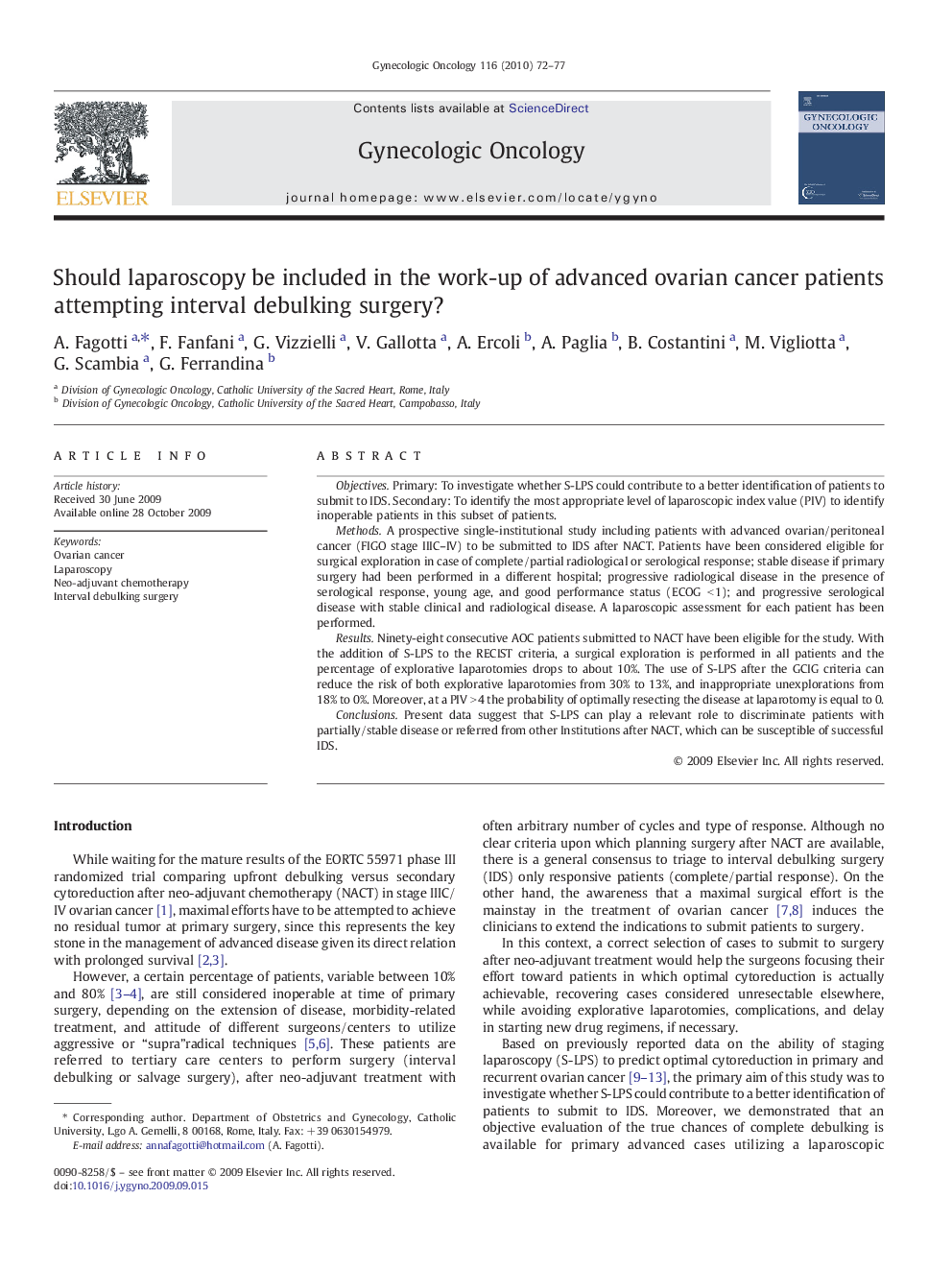| Article ID | Journal | Published Year | Pages | File Type |
|---|---|---|---|---|
| 3943199 | Gynecologic Oncology | 2010 | 6 Pages |
ObjectivesPrimary: To investigate whether S-LPS could contribute to a better identification of patients to submit to IDS. Secondary: To identify the most appropriate level of laparoscopic index value (PIV) to identify inoperable patients in this subset of patients.MethodsA prospective single-institutional study including patients with advanced ovarian/peritoneal cancer (FIGO stage IIIC–IV) to be submitted to IDS after NACT. Patients have been considered eligible for surgical exploration in case of complete/partial radiological or serological response; stable disease if primary surgery had been performed in a different hospital; progressive radiological disease in the presence of serological response, young age, and good performance status (ECOG < 1); and progressive serological disease with stable clinical and radiological disease. A laparoscopic assessment for each patient has been performed.ResultsNinety-eight consecutive AOC patients submitted to NACT have been eligible for the study. With the addition of S-LPS to the RECIST criteria, a surgical exploration is performed in all patients and the percentage of explorative laparotomies drops to about 10%. The use of S-LPS after the GCIG criteria can reduce the risk of both explorative laparotomies from 30% to 13%, and inappropriate unexplorations from 18% to 0%. Moreover, at a PIV > 4 the probability of optimally resecting the disease at laparotomy is equal to 0.ConclusionsPresent data suggest that S-LPS can play a relevant role to discriminate patients with partially/stable disease or referred from other Institutions after NACT, which can be susceptible of successful IDS.
